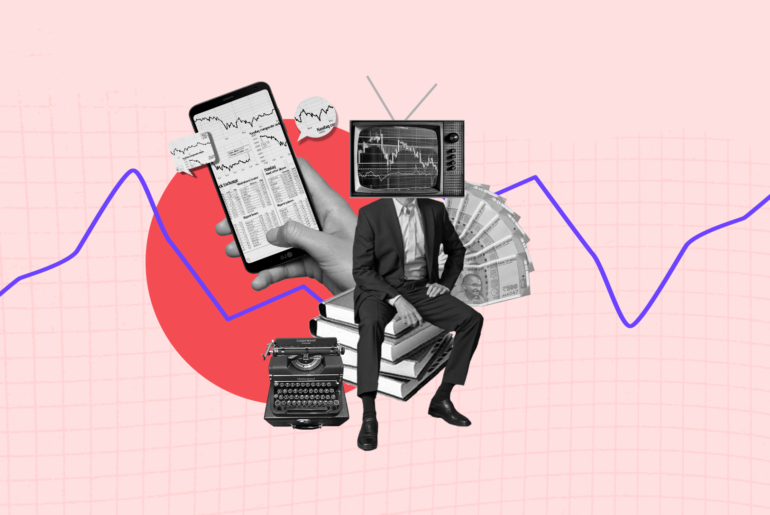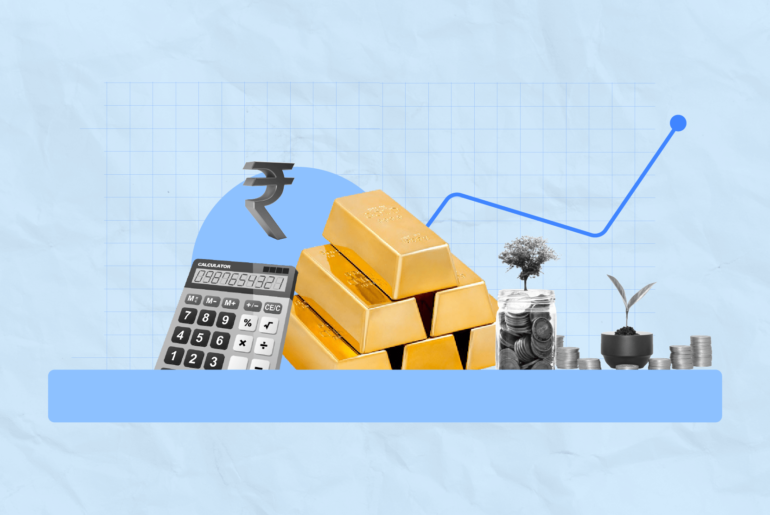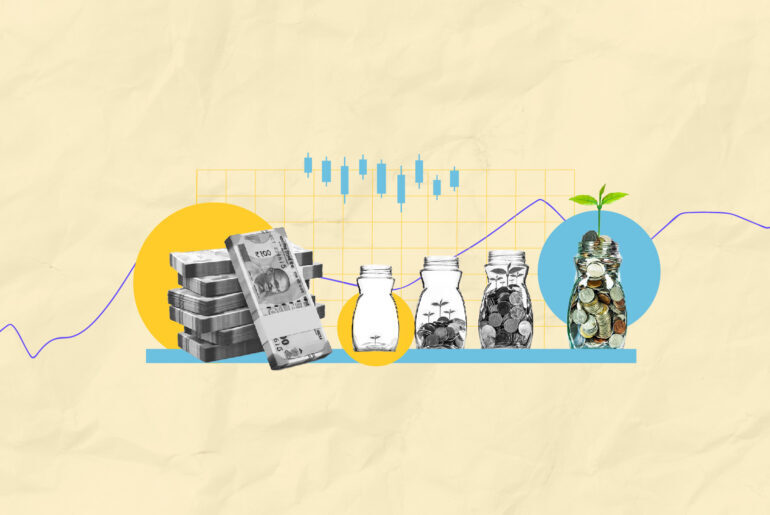Last Updated on Jan 21, 2022 by Aradhana Gotur
After surging close to 25% since the beginning of this financial year (April 2021), on top of a staggering 73% rise in the previous year, the markets had corrected close to 10% by the beginning of December. The primary reasons for this correction include high input costs – a result of inflation – leading to a margin squeeze for a majority of companies and expensive valuation of Indian markets relative to other emerging economies including China. You may read a detailed discussion of these reasons here.
After this correction, the price to earnings ratio of the Nifty Index stands at 26.31, which is near the 5-yr average of 27.59. Considering the fact that the combined earnings per share (EPS) of Nifty 50 companies has risen by more than 60% this financial year – from Rs. 442 in April 2021 to Rs. 725 on 7 December 2022 – the Indian market does not appear as expensive anymore, especially when compared to its own historical average. This is to say that this correction may offer very attractive opportunities to enter quality companies from a medium to long-term perspective.
That said, how would 2022 pan out for the market? To understand that, it may help to discuss the “expected” macro events that may influence the markets over the course of the next year. Unexpected, black swan events (such as the pandemic) that may lead to a market crash are extremely difficult to predict and therefore beyond the scope of this discussion.
Table of Contents
Inflation
For one, inflation remains the primary concern for most central banks and therefore also global investors. Though the Federal Reserve Chairman had maintained that inflation was transitory, led mainly by supply-side constraints owing to the pandemic-led restrictions, he changed his stance earlier this month stating that inflation was “no longer transitory” and that the central bank may discuss withdrawing the stimulus earlier than expected.
Remember that one of the primary reasons for the strong bull market rally in the past 2 yrs has been the low-interest rate regime maintained by central banks globally in the aftermath of the pandemic. Low interest rates make borrowing cheaper and therefore help individuals and companies tide over any cash or working capital crunch faced during a crisis.
On the flipside, however, low-interest rates may also spur inflation as consumers increase spending by borrowing. To curb inflation, therefore, central banks may be compelled to raise interest rates.
While we await more details about the Fed’s plans to withdraw the stimulus, any “unexpected” announcement of an interest rate hike could rock the stock markets as easy money may no longer flow as readily into emerging markets. One could debate about the exact timing of the rate hike by the Federal Reserve, but given that the US has been recovering well from the pandemic (reaching full employment), one would not be faulted for assuming that the era of low interest rate is nearing an end sooner than later.
Omicron
By now, we also know that the Omicron variant of the coronavirus, though more infectious than the previous variants, has milder symptoms and is unlikely to cause as much disruption to the global economies as expected. While this may boost global economic growth, inflation could continue to increase input costs for companies, thereby hurting their margins and valuations. The recent correction, however, may have factored in this margin squeeze on account of inflation. But the broader point remains: It may not be as easy to earn returns from the stock market as it was over the last 2 yrs. One would be well advised to tone down their return expectations.
Volatility
Another event that could increase volatility in the markets is the assembly elections to be held in several key states over the next year. These include Uttar Pradesh, Goa, and Gujarat. Since Uttar Pradesh sends the most MPs to the parliament by virtue of its sheer size, and Gujarat remains a key stronghold of the incumbent government, any adverse election outcome in these two states could negatively impact the markets – though only over the shorter term.
These risks notwithstanding, and assuming we do not see more deadly variants of the virus that may require strict movement restrictions, there are several key sectors that may perform well over 2022. Banking, for instance, has underperformed the broader markets ever since the pandemic began – and for valid reasons. The investors feared a rise in bad loans, increased provisioning feeding into lower earnings, and subdued credit growth. But this seems to be more or less behind us now.
Bank credit growth, for instance, now seems to be in an upward trajectory. After registering slower growth consistently since the quarter ending June 2019, the aggregate bank credit grew 7% in the quarter ending September 2021, up from 5.8% in the quarter ending September 2020. Since the primary income of banks comes through lending, higher credit growth bodes well for the sector.
Infrastructure sector
Another sector that could perform well is infrastructure. A combination of government policies, including the production-linked incentive scheme, corporate tax rate reduction, a planned investment outlay of Rs. 110 lakh cr. in infrastructure over the next 5 yrs, and credit growth revival could bode well for the infrastructure sector over the medium term. The RBI governor echoed this sentiment in his statement delivered on 8th October: “ Improvement in government capex, together with congenial financial conditions, could bring about an upturn in the much-awaited virtuous investment cycle. Pick up in import of capital goods and cement production point towards some revival in investment activity.” [link: https://www.rbi.org.in/Scripts/BS_PressReleaseDisplay.aspx?prid=52367]
IT sector
Finally, though the IT sector has run up sharply over the past year and is now trading at a premium valuation of as much as 30% compared to the broader BSE Sensex, it may help to consider a correction of 10-15% in the IT index as an attractive opportunity.
This is because, as Rajesh Gopinathan of TCS stated recently, companies across the world are “embarking on a multi-year technology upgradation cycle.” Consider this: Mastek, an Indian IT company that earns as much as 32% of its revenue from the UK government is expected to benefit from the National Health Service’s plans to spend £ 5 bn. over the next 5 yrs in the digital transformation of its system.
While one should be especially cognizant of the expensive valuation of the IT sector, the multi-year digital transformation story may offer pockets of attractive opportunities in this sector, especially during corrections.
To summarize, both inflation (with the prospect of rising interest rates) and upcoming assembly elections may keep markets volatile in 2022. But after the recent 10% correction, the markets do not appear as expensive on the valuations front. Inflation, remember, is a cost that economies have to pay for growth. While there may be inflation without growth, there may not be sustained growth without at least some bit of inflation. This is to say that over the medium to longer term, inflation and even rising interest rates are not major risks. They may play tantrums with the markets in the shorter term, however. In 2022, it may help to focus on pockets of growth, especially in sectors such as banking, infrastructure, and IT sectors while keeping valuations in consideration.





